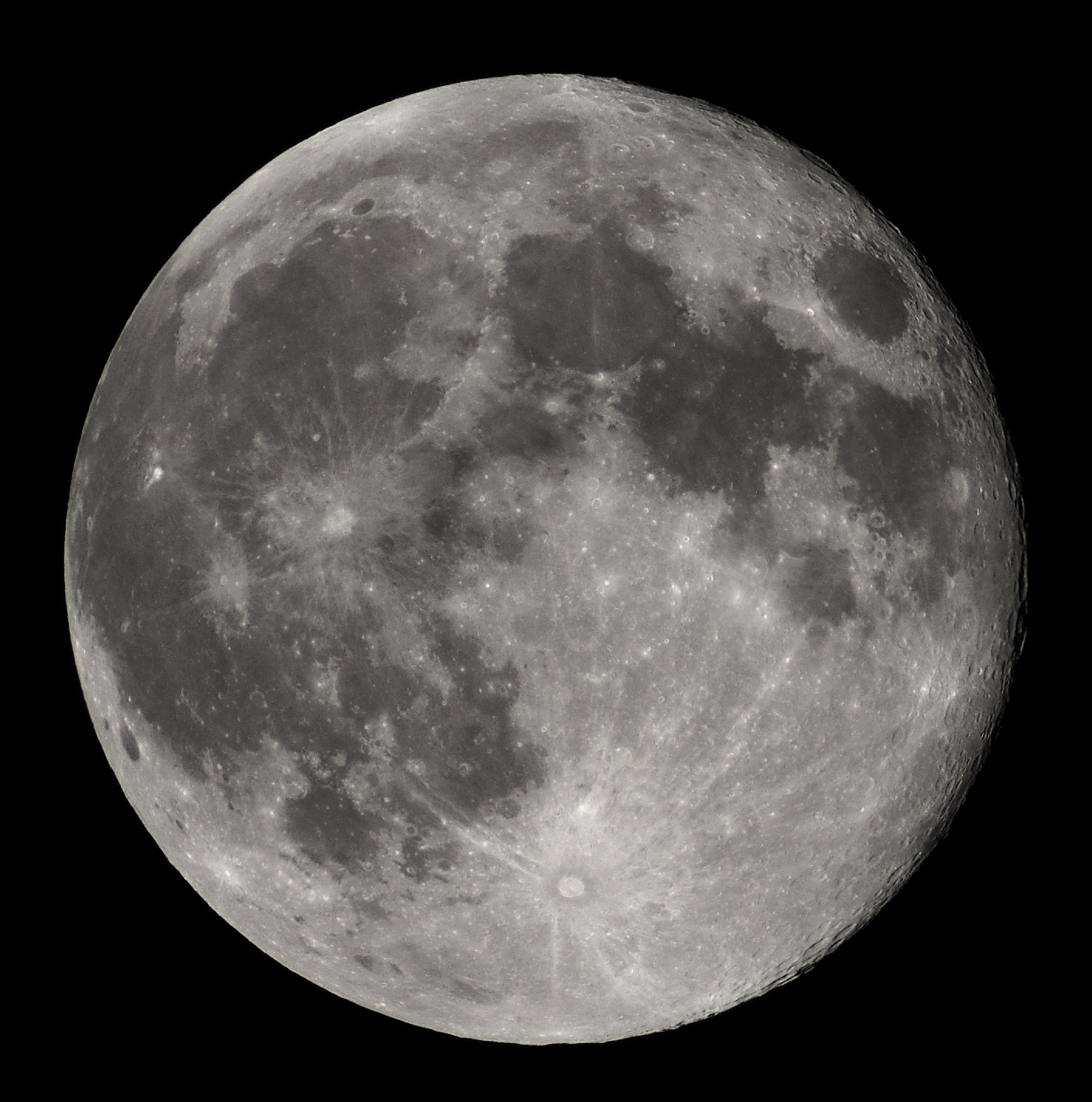 |
Figure 10 The Moon
http://en.wikipedia.org/wiki/File:Full_Moon_Luc_Viatour.jpg
|
In order to understand where the Moon came from, scientists needed to know how old it was. This would narrow down the possibilities so that scientists could concentrate on the most likely ones. After using isotopic analysis it was determined that the lunar basalts were the youngest at 3.16 Gy, while the rocks from the "highlands" were 4.6 Gy. This was a very interesting result, since the oldest rocks on the earth are around 3.8 Gy. How in the heck can the moon be "older" than the earth? We'll explore that later.
Measure twice, cut once is the wise "best practice' of carpenters. Taking measurements are important so that you don't make a mistake later. When formulating a scientific theory, there are important things that you need to measure. Weights, distances, velocity, etc. data are all needed to build your scientific model. You need to pick a point of reference (foundation) from which the rest of your theory will take shape.
 |
| Figure 11 Buzz Aldrin installing equipment on the Moon (http://en.wikipedia.org/wiki/File:Aldrin_with_experiment.jpg) |
Anyway, one of the most important (scientific) actions that Neil and Buzz did on the Moon (in 1969) was to hit a golf ball! No, actually it was to plant a retroreflector. A retroreflector is basically a large mirror which is used for laser rangefinding i.e. you shoot a laser from the Earth to the Moon and by timing the return (reflected) beam you can determine the distance to the Moon (with a high degree of accuracy).
This range finding has been going on continuously since 1969, and we now know that the Moon is moving away from the Earth at 38mm (1.5 inch) per year.
This is an unique measurement! You cannot make this (direct) measurement (distance vs. time) ANYWHERE else in the Solar System. For instance, if you landed on Mars and installed a retroreflector, you could measure the distance from Earth to Mars. But if you wanted to know if Mars is moving away from the Earth, you would have to add estimates into the calculation (time of day, time of year, where Earth and Mars are in relation with each other). Since the Sun has no solid surface, you could not do this (direct) measurement there either. There would be no (direct) way to tell if Earth is moving away from (or closer to) Mars (or the Sun) over time.
In order to move the Moon into a higher orbit (which is what the data is telling us), you would need to add energy to "escape from" the force of (Earth's) gravity. The CSB says that the action of the Moon pulling on the ocean (tides) "steals" energy from the Earth - so the Earth slows down (rotation) and the Moon moves away (higher orbit).
NOTE: As the Earth slows down, the day gets longer (24 hours +), and the less days you have in a year. This also means that "high noon" - the time of day when the sun is directly overhead - shifts to later in the day. So in order to sync noontime with the Sun, you need to shift the clock. This is why we add "leap seconds" at the end of the year (this happened in 2008).
 |
| Figure 12 Consequences of a larger Moon orbit © Chris Rampson |
If the Moon is moving away from the Earth - wouldn't it also be moving closer to the Sun (in at least one position of its orbit - perihelion)?
Conundrum 6: The Moon's perihelion is shrinking
How can you add energy to an orbit and get closer to the Sun (the opposite should happen)?
Many scientists would argue that since the Moon is much closer to the Earth, its gravity would "dominate" over the Sun's, so that a shrinking perihelion is not a conundrum.
Let's play devil's advocate here, what if the CSB has it wrong and the opposite is true? What if the Earth is moving away from the Moon?
No comments:
Post a Comment